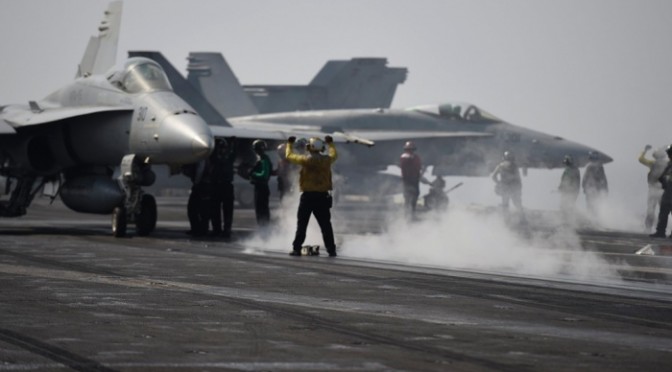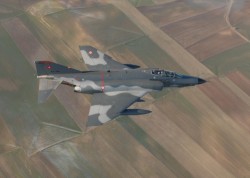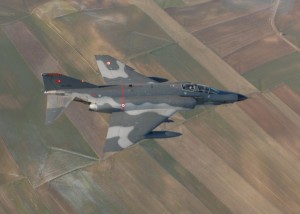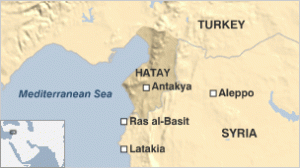“Kurdish Forces, Backed by Coalition Airstrikes, Move Toward Mosul” announced a recent headline from the front in the war against the so-called Islamic State (ISIS) in Iraq and Syria. As I read this headline the slogan that popped into my mind was Toys-R-US, or more to the point, Airpower-R-US; and in a more joint context, Fires-R-US. The US stands for United States. The metaphor here involves going to the store (the US) and getting what one needs to handle one’s military and political problems. The toys, of course, are the array of capabilities that the US Department of Defense can provide, courtesy of the National Security Council and with the blessing of the President; especially combat aircraft and the best trained crews for them in the world.
With all the handwringing about the future of warfare and the 21st century “threat” being bandied about in security policy circles, perhaps the new norm should be identified as the US’s propensity for “loaning out” its air power and fires capabilities. These tend to be assigned to causes US leaders perceive as “righteous” or at least worthwhile enough (to US interests) to apply the military component of national power. The Kurds for example might provide the ground troops and we provide the air/fire power to help them achieve their goals (and maybe even air defense and ballistic missile defense). Or perhaps to simply prevent US enemies (like ISIS) from achieving their goals, or rather, more of their goals.
This approach to the use of military power seems to be something we previewed for everyone as early as World War II, and then practiced more deliberately in places like Vietnam, Iraq (1990- present), Bosnia, Kosovo, Afghanistan, Libya, and now Syria (whose conflict now overlaps with Iraq). In order to provide value, a brief review of the history of the evolution of Airpower-R-US is in order. As a reminder, the pattern we are discussing is a tendency to eschew the commitment of ground forces in favor of commitment of air power (including things like sea-launched land attack cruise missiles and Predator drones with hardkill payloads).
World War II: The Pattern in Preview
The US first previewed a pattern of providing high tech additives, primarily air power, in its strategic planning and initial execution of operations in World War II.
Its leaders, especially President Franklin Roosevelt and the air power lobby, initiated this practice during World War II, providing first the equipment (Lend-Lease) and then the manned air forces to sustain the major ground fights, primarily in the Soviet Union but also as a strategy for the Pacific in China. Claire Chennault, for example, was sent to Nationalist China to help build, train, and employ its (American-built) air force against the Japanese in 1937. As for Europe, the air power advocates produced the overall air plan designed to achieve victory shortly after the war in Europe began in 1939 and over the course of 1940 and early 1941. It was designated AWPD-1. Here is a summary that leaves no doubt about what it intended to do:
The primary target systems were selected on the basis of an air offensive embracing the entire strategic air force, after it had reached full strength and lasting for six months. Moreover, the offensive was planned to be completed before the invasion, if an invasion should prove necessary. Target schedule for the beginning of the main air offensive was taken as one year and nine months after the outbreak of war. One year was for the production, training, and organization of the force. Nine months were reserved for deployment overseas, build up, and initial combat experience of the force. By that time, we anticipated there should be a total bomber force of nearly 4,000 bombers in place. [emphases original]
However, both of these we-provide-the air-(and navy) and you-provide-the-troops strategies did not completely pan out. It may have in Europe had the US accepted the probable loss of Western Europe to the Soviets. In any case, large numbers of US ground troops ended up being committed in combat. This was a preview of an emerging pattern.
This pattern, it might be assumed, had proven itself somewhat less than efficacious, at least in terms of avoiding the commitment of US ground forces, although what was committed was the result of a gamble, that air power would work and the US only needed 90 divisions at most to win the war. In fact it came dangerously close to running out of ground power by the end of the war. The World War II pattern in many ways repeated itself just five short years later in Korea, when deterrence with atomic weapons delivered by air power came up short and there was precious little conventional air power on hand to help not only the South Koreans but even US ground forces until the crisis at Pusan had passed.
Vietnam and Beyond
At this point the pattern seemed to take a holiday. That holiday was known as Vietnam; or more correctly the years of primarily advisory support to the government of South Vietnam (1959-1965). However, with the failure of the advisory effort by Military Assistance Command, Vietnam (MAC-V), the pattern re-emerged as President Lyndon Johnson intervened with ground forces, initially as security forces for US and South Vietnamese air bases at places like Bien Hoa and Da Nang. However, ground forces soon got sucked into the fighting and the war assumed a two track character: General William Westmoreland and the South Vietnamese Army (ARVN) fought the ground war while five separate air forces (four of them US) fought the air war. The crowning jewel of the air war was Operation ROLLING THUNDER, an air campaign intended to actually win the war by sending “signals” to the North Vietnamese leaders in Hanoi to cease and desist with their aggressions in the south. It failed miserably and was cancelled by Johnson during the chaotic year of 1968. In contrast, the ground war achieved a stalemate as a result of the defeat of the North Vietnamese Army (NVA) and Viet Cong during the Tet Offensive.
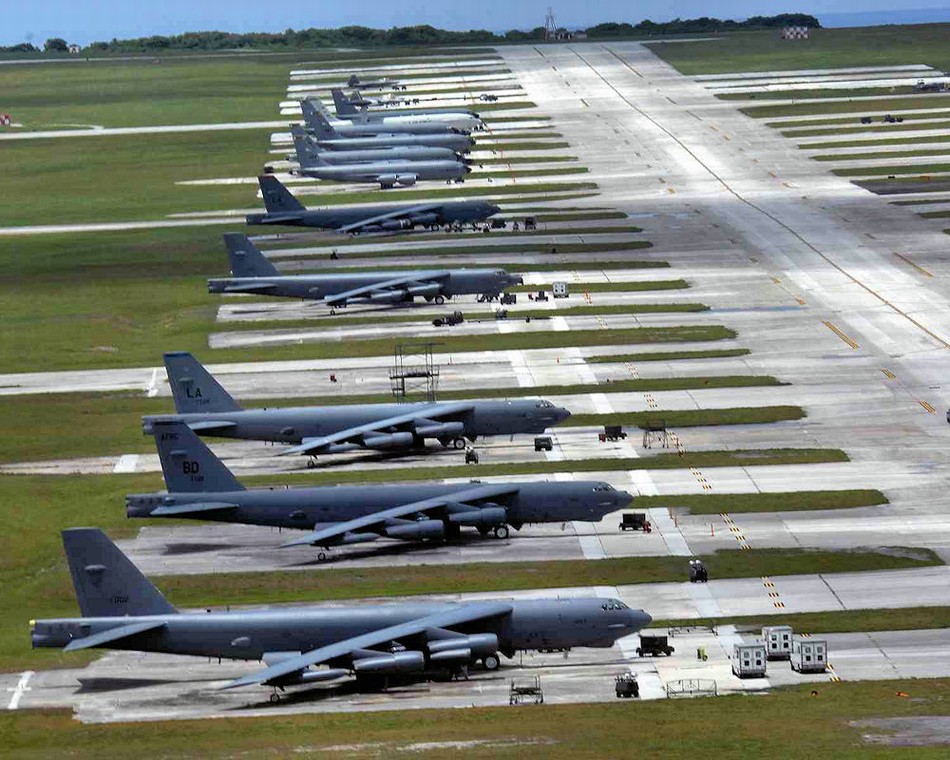
Failure and stalemate in Vietnam in 1968 led to the first realization of what today’s pattern, on display in places like Yemen, Syria, and Iraq, might look like. Johnson’s successor as commander in chief, Richard Nixon, decided to “Vietnamize” the war. Critical to this approach was the withdrawal of ground combat forces (as in Iraq and Afghanistan, today). However, Nixon gave the South Vietnamese leaders assurances that their military would be supported by US air power and in 1972 this was successfully tested as the ARVN bore the brunt of the so-called Easter Offensive by the NVA in its attempt to conquer the south in one fell swoop. Massive application of US air power in the two LINEBACKER air campaigns, along with some hard fighting by the ARVN, saved the day, albeit only temporarily. The Pattern (it now deserves formal noun status), had worked. US air power and indigenous ground forces had staved off disaster, against one of the best armies in the world. Until they didn’t—after two years (50 years ago this year) and Nixon was no longer President. The US refused to use Airpower-R-US in 1975 to help its “abandoned” client in Saigon and the NVA achieved its long sought goal of unifying Vietnam under communist rule.
There was something like the Pattern in the US support of the Afghan Mujahedeen in their fight against the Soviets during the last decade of the Cold War, but instead of US pilots, the hardware was of the smaller variety, most especially surface-to-air missiles, an Anti-Airpower-R-US variant. Similarly, the small Gulf States accessed a sea power version of US power in the late 1980s with the reflagging of Kuwaiti ships in response to Iranian mining threats. In that case the US provided all of the maritime firepower during Operations . But these operations reflect something of the Pattern. One might advance the idea that it was also a partial component behind Operations DESERT SHIELD and DESERT STORM, especially the seven week air campaign that preceded the ground offensive. During the planning for that component of the operations, the air force chief of staff was relieved for suggesting that air power might do it alone, without the commitment of substantial US and coalition ground forces to actual combat beyond their coercive value as a threat. As it turned out the US had to make good on that threat to use ground forces after all to retake Kuwait.
However, the Pattern, now in its mature form, emerged after the end of the Cold War. The author experienced it directly while flying missions for the Navy during operations DENY FLIGHT and DELIBERATE FORCE, wherein NATO conducted overlapping air campaigns to stabilize the situation in Bosnia from 1994 to 1995. NATO air power finally conducted limited bombing attacks, measurably aided by an offensive of Bosnian-Croat ground forces that led to the signing of the Dayton Accords in the Fall of 1995 by all parties (including the Bosnia Serb factions). This same dynamic occurred again four years later with Operation ALLIED FORCE, the air campaign against Serbia and in support of the Kosovar Albanians. It has been characterized as “winning ugly,” but for those folks interested in limited war, Airpower-R-US provided more evidence to support the efficacy of this approach, no matter how messy. The commander of US forces in Europe, General Wesley Clark, even cached the experience into a book proclaiming that this was the face of modern war.
As with all things, after the terrorist attacks on 9/11, the US entered something of an interregnum, or interval, in which the Pattern was not the primary choice. Both the Afghanistan and Iraq campaigns, although relying heavily on air power, employed substantial ground forces. Of the two, the initial phases of Operation ENDURING FREEDOM in Afghanistan most closely approximate the Pattern when US air power, special forces, and indigenous forces took the fight to Al Qaeda and the Taliban in 2001. However, by Operation Anaconda in March of 2002, substantial US ground forces were back in the game and the utility of the Pattern presumably inadequate to achieving further national interests in that desolate place.
The sobering experiences in Iraq and Afghanistan from 2001 to 2014 led to a full-fledged return of the Pattern. Its first widespread use has already occurred with the proliferation of armed drones, sometimes with the permission of governments, and, in the case of Pakistan, sometimes not . The point at which use of the Pattern can definitely be characterized as the norm came with the so-called “Arab Spring,” most especially in the oddly named Operation ODYSSEY DAWN, although the bulk of NATO air power employed to help the Libyan insurgents against the forces of Muammar Gaddafi was US. Questions of its ultimate efficacy aside, it did get the job done of pairing up US/NATO air power (and sea power) in support of indigenous “boots on the ground” to accomplish regime change. Whether this result was for better or worse is a different matter and beyond the scope of this discussion.
Which brings us back to today’s headlines and the current air campaign in Iraq and Syria—Operation . The Pattern here supports a variety of different entities and their ground forces including: the government of Iraq, various rebel groups fighting ISIS, the aforementioned Kurds, and whether we like to admit it or not, Bashar Al Assad. We might even throw in the enemy of our enemy, Iran. The Obama administration’s embrace of this approach, similar to that of the earlier Clinton administration, has potentially far reaching implications in what it tells us about the evolving American Way of War. Are these really “new” norms, or are they now established norms? And based on this review of pertinent recent history, how new are they, really?
Today: Old-New Ways of War
In sum, The US has established a pattern of providing high tech capabilities, primarily air power, to the ground forces of others (nations as well as non-states like the Kurds and the Kosovo Liberation Army), as a means to achieve its national interests and objectives. This US approach places air power alongside venerable mercenary icons such as the Swiss Landsknecht and the Italian Condottierri of the 15th and 16th Centuries. Is Airpower-R US an updated version the infamous army of General Albrecht von Wallenstein that hired itself out to various bidders during the 30 Years War? Has it become a sort of paradigm mercenary force available for hire as a means to maintain and defend US (and sometimes Western) interests? Instead of receiving money as payment, though, the US forgoes commitment of ground troops and gets stability in return (or maintains the stability of the existing system).
Is this approach worth preserving, or even improving? Whatever the road ahead, it is here and it is in active use today in Iraq, Syria and elsewhere. It might be in use in the near future in Ukraine and it is incumbent on US policymakers to think a bit more intensely about what they design the military instrument of national power to do, and not do, for the future. In a time of relatively low risk, it makes some sense. But does it need to be so expensive, and can we get the same bang for the buck for a lot less? These are the questions we should be asking ourselves about Airpower-R-US, and certainly a few other related issues, as we await the next crisis in which we might employ it.
About the author:
Dr. John T. Kuehn is the General William Stofft Chair for Historical Research at the U.S. Army Command and General Staff College CGSC). He retired from the U.S. Navy 2004 at the rank of commander after 23 years of service as a naval flight officer flying both land-based and carrier-based aircraft. He has taught a variety of subjects, including military history, at CGSC since 2000. He authored Agents of Innovation (2008), A Military History of Japan: From the Age of the Samurai to the 21st Century (2014), and co-authored Eyewitness Pacific Theater (2008) with D.M. Giangreco as well as numerous articles and editorials and was awarded a Moncado Prize from the Society for Military History in 2011. His latest book, due out from Praeger just in time for the 200th Anniversary of the Battle of Waterloo is Napoleonic Warfare: The Operational Art of the Great Campaigns.
The views are those of the author and do not reflect the official policy or position of the Department of the Army, Department of Defense, or the U.S. Government.

